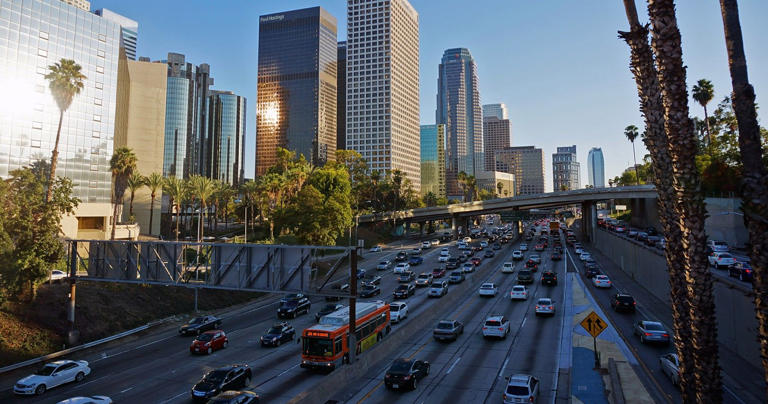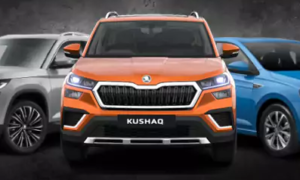If you haven’t heard, a historic rule was been adopted by the California Air and Resources Board (CARB). The sale of automobiles in California powered only by internal combustion engines will be banned by all manufacturers by the year 2035. (ICE). That in about a dozen years, you won’t be able to buy a brand-new automobile fueled by gasoline.

Governor Gavin Newsom initially proposed these groundbreaking policies in 2020 to combat climate change by cutting carbon emissions. Different people all around the nation had quite different reactions to this groundbreaking information. As the globe readies itself for the imminent transition to an all-electric-vehicle (EV) future, numerous questions, worries, and uncertainties have arisen.
When a major shift is on the horizon, there will inevitably be both early adopters and doubters. The arrival of electric vehicles is as inevitable as Winter in the HBO series Game of Thrones. As the world’s most populous state, California is gearing up to be the example for the transition to an EV future.
When it comes to charging stations, do we have enough for EVs?
The most common concern is whether or not California’s power system can keep up with the expected increase in the number of electric cars on the state’s highways. The most populous state in the United States, home to over 40 million people, is struggling to meet its energy needs. Conserving energy is another rare resource that Californians must adhere to in order to lessen the likelihood of wildfires caused by the state’s electrical infrastructure.
The people of California are used to cutting down on energy use for the sake of the state. One utility that offers incentives to its consumers for conserving energy is San Diego Gas & Electric (SDG&E). If a household reduces its power use between 4 and 9 o’clock in the evening during the summer, it will get a rebate.
Every kilowatt (kW) of energy saved is worth $2 to the participants. You can count on California to implement a similar incentive scheme to promote energy saving across the State.
The Effects Of The Ban On Antique Automobiles
To be clear, the restriction solely applies to the purchase and registration of new vehicles and has no effect on preexisting vehicles. Since smog has plagued the Golden State for decades, stringent emissions testing has been standard procedure. For those of you who aren’t acquainted with the word, “smog” refers to the black soot that may occasionally be seen floating in the Los Angeles sky.
Pollutants in the air react with gases released by internal combustion engine (ICE) vehicles and other sources that burn fossil fuels, causing this phenomenon. Vehicles built after 1975 must pass strict smog tests every two years in order to maintain their California registration. Continuing tightening of these requirements by the California Air and Resources Board has made it more difficult for gasoline-powered vehicles to stay legally on the road.
To improve air quality for their citizens, other states have begun to undertake comparable emissions monitoring as well. Because achieving zero emissions is CARB’s ultimate aim, passing smog tests will get more harder over time. This might spell disaster for vintage automobile enthusiasts in the state that claims that title.
Similar to the law that was in place in California in 1975, registered classics will be exempt from the new smog regulations. This would satisfy historic automobile enthusiasts and discourage owners from relocating to another state, saving California money in the long run.
Attrition will naturally reduce the number of ICE vehicles, increasing demand and value for the survivors. A classic’s supply is dwindling, and with that comes a higher demand, therefore now is the time to consider making a purchase.
There Is Much Work To Be Done Before We Reach An Electric Age
Everything, including modes of transportation, goes through a period of change. The majority of households that used horse-drawn carriages at the start of the 19th century were hesitant to upgrade to steam-powered automobiles. The invention of the internal combustion engine decades later was met with more skepticism than enthusiasm.
New vehicle sales must be 100% electric by 2035, up from 35% in 2026 and 50% in 2028. The phase-out of ICE vehicles will be staggered. In order to make the transition to an electric-only future, drivers must first realize how little they have to give up to enjoy the advantages of an electric vehicle. Manufacturers may sell 20% of their portfolio as Plug-in Hybrids to help win over many prospective skeptical buyers.
Most Plug-in Hybrids (PHEVs) only go approximately 30 miles on a single charge, therefore by 2035, PHEVs will need to expand their battery capacity. PHEVs are an excellent compromise for those in the market for a new vehicle who want to keep driving their ICE vehicle but also get the advantages of becoming electric. In California, the typical price of a plug-in electric vehicle is $66,000. Assuming the state of California mandates that all new automobile purchases be electric vehicles, the price of EVs must come down.
The electric vehicle company Fisker has introduced their new Ocean electric crossover vehicle. By the end of this year, Fisker will begin manufacturing its first SUV. It will have a maximum range of 350 miles and be outfitted with cutting-edge technology (including California mode). You recall what desktop computers used to cost in the nineties, and thanks to innovation, EVs will be available at more reasonable pricing.
The catalytic converter is largely responsible for the significant reduction in carbon emissions achieved by contemporary automobiles. However, the Golden State has now established itself as a leader toward a future with no emissions. If Californians are lucky, they’ll still have the option of driving about in their classic gas-powered cars in the year 2035.
READ MORE- Unveiling a Refreshed Company Image, the Skoda Vision 7S Concept Is Now Public




